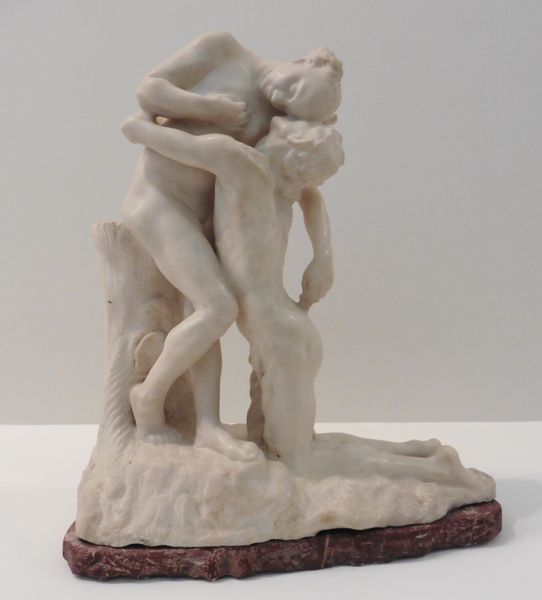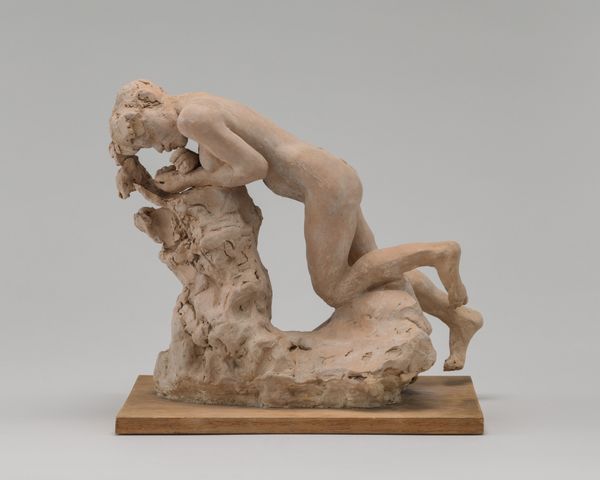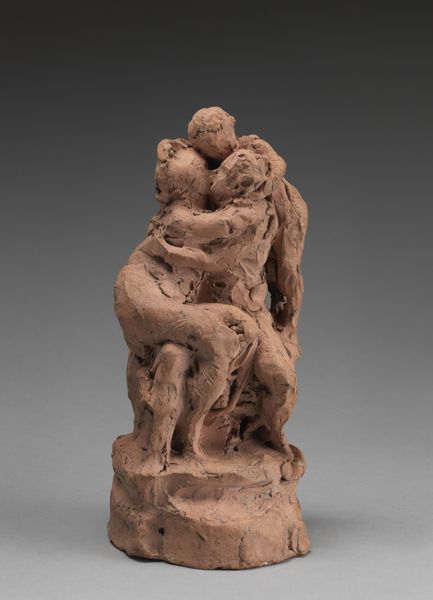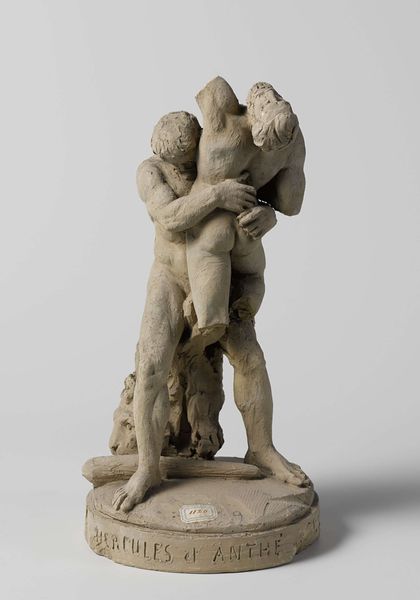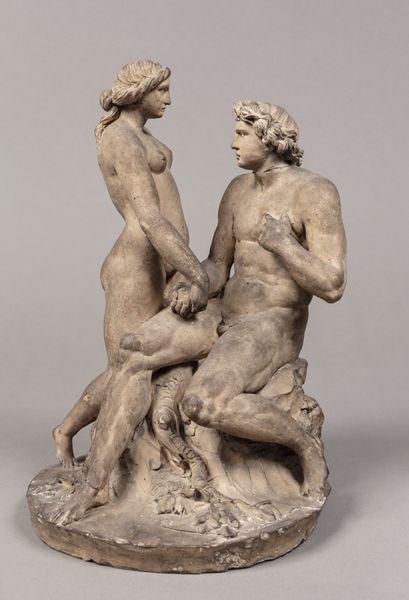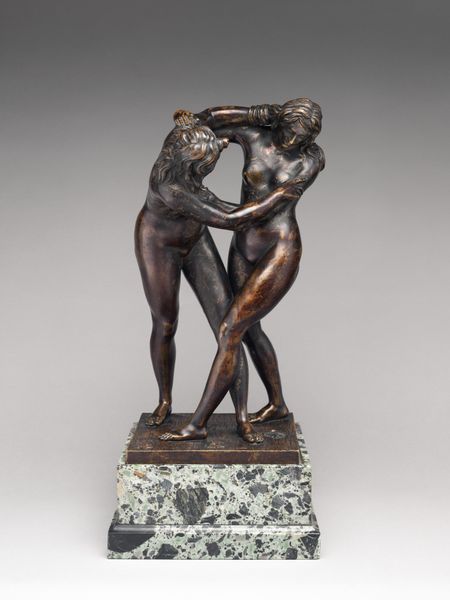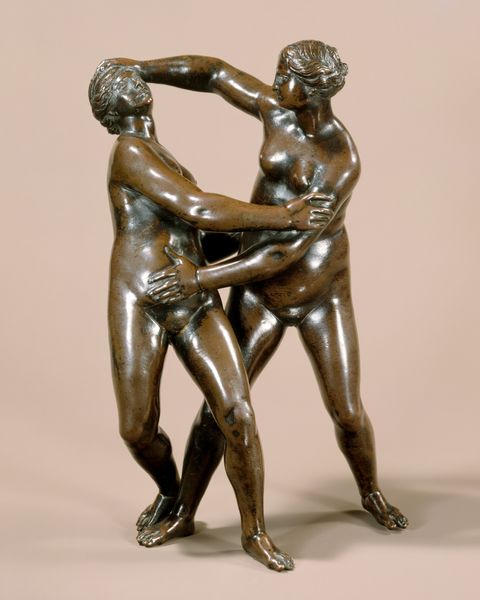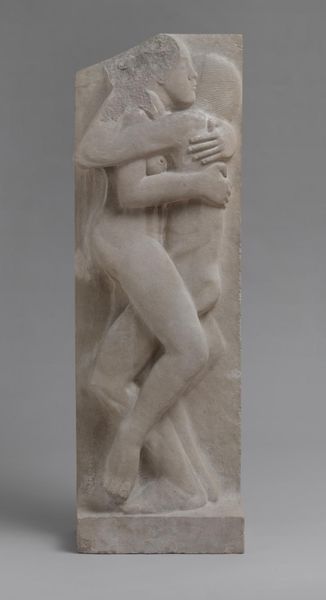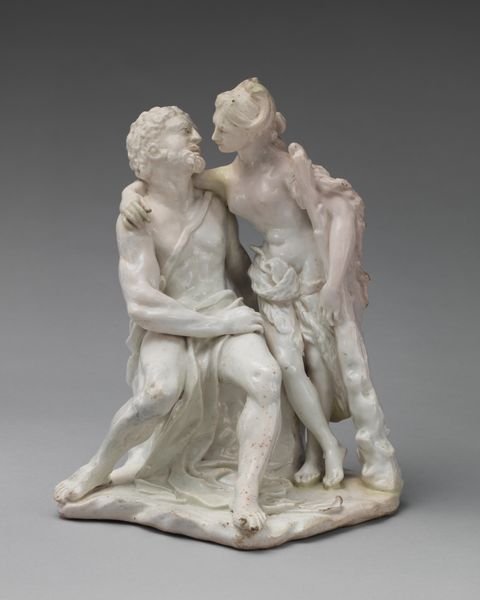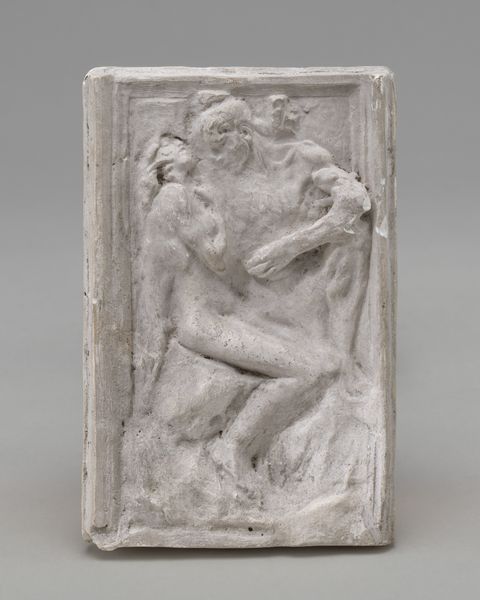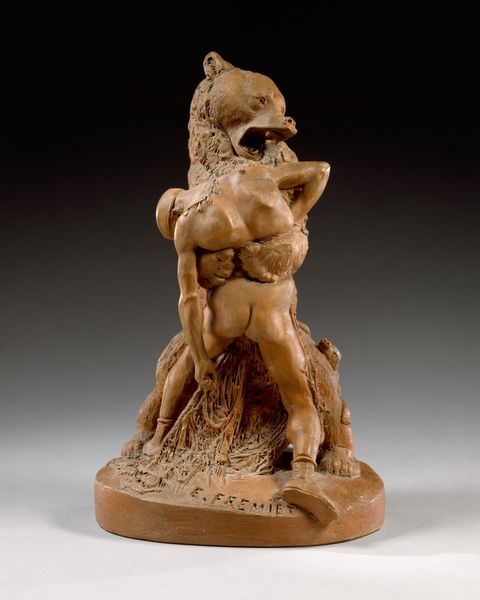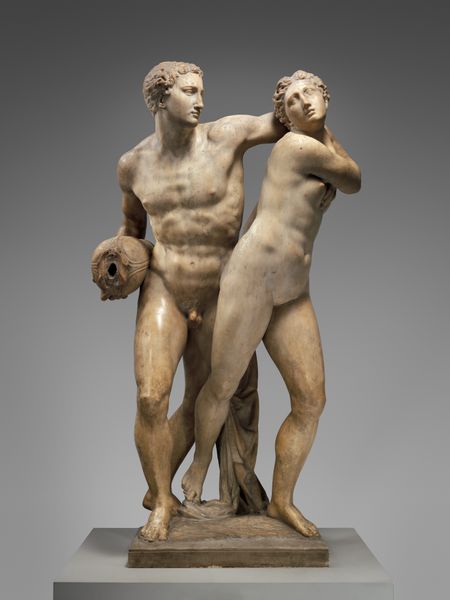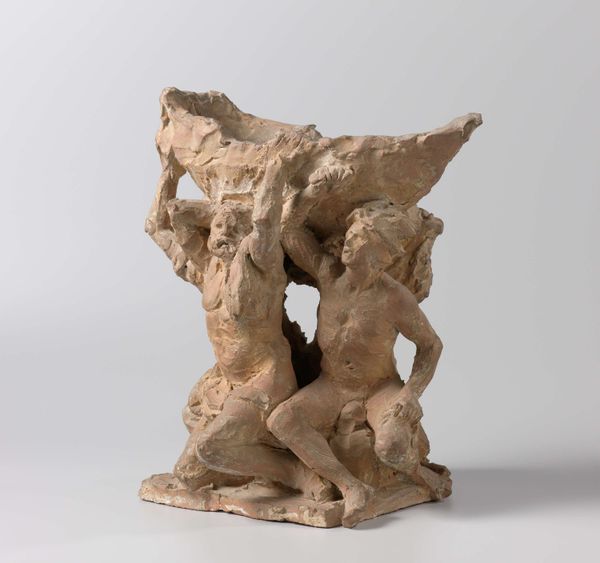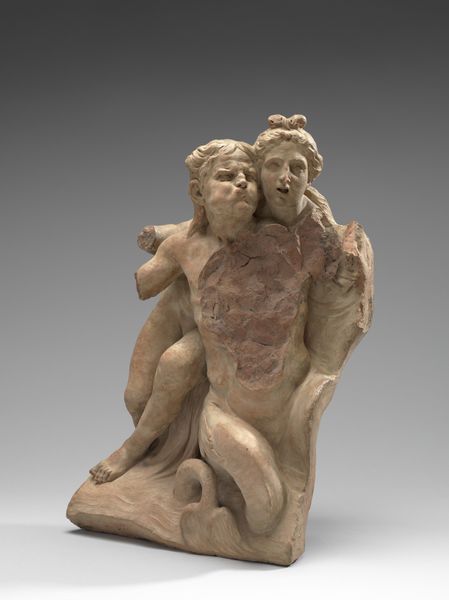
bronze, sculpture
#
statue
#
bronze
#
figuration
#
sculpture
#
symbolism
#
nude
#
modernism
Dimensions: overall (height): 18.4 cm (7 1/4 in.)
Copyright: National Gallery of Art: CC0 1.0
Editor: We’re looking at Aristide Maillol’s bronze sculpture, "Women Wrestlers," from 1900. I'm struck by the raw physicality of it; you can almost feel the weight and strain of the figures. What aspects of this work do you find most compelling? Curator: Well, it's interesting to consider Maillol’s choice of bronze and what it communicates here. We see a turn away from the preciousness of earlier academic sculpture. He presents us with labor embodied not only in the subject – these wrestlers – but in the very means of production. Consider the lost-wax casting process; the direct manipulation of the material allows Maillol to highlight the physical engagement inherent in both wrestling and sculpting. How does that influence our perception of the piece? Editor: That’s fascinating. It makes me think about the accessibility of art; bronze allows for multiples, for a wider audience. Curator: Exactly! The question then becomes: who is this wider audience? Who consumes this image of female strength, and what social dynamics are at play? Maillol created this at a time when ideas around the "New Woman" were circulating; ideas about female physical prowess. I would even ask, where were sculptures like this typically displayed and seen at the time? What does this artwork contribute to ideas of physicality at the turn of the century? Editor: So, you're saying it’s not just about the wrestlers’ physical interaction, but about the socioeconomic forces that allowed for and encouraged this kind of representation. It's much less of a neutral depiction then, and much more an artwork rooted in the context and mode of the culture that surrounded its construction and patronage. Curator: Precisely. By attending to the material reality of its making and reception, we unveil the complex ways this seemingly simple sculpture is entangled with the larger world of labor, class, and gender. Editor: This makes me appreciate the sculpture in a completely different way. I came looking at it from just an aesthetic angle and you reframed the way the sculpture was materially composed within its broader cultural and societal moment, and what its consumption and appreciation may have meant at the time, and today.
Comments
No comments
Be the first to comment and join the conversation on the ultimate creative platform.
